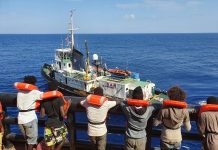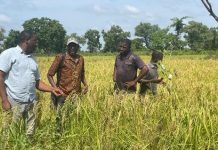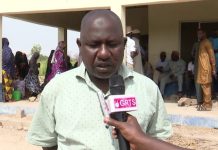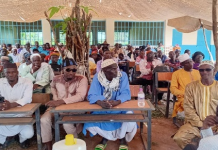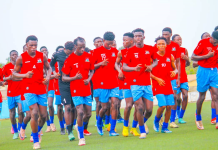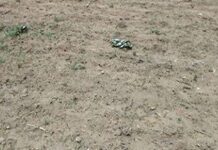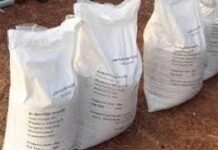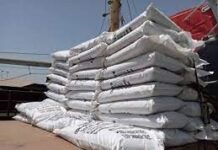Abdoulie G Dibba
This column is devoted to monitor and report on issues that relate to production, processing, preservation and  marketing of agricultural produce aimed at ensuring food security in the Gambia as well as the interventions of Government and Non-governmental Organizations in this regard.
marketing of agricultural produce aimed at ensuring food security in the Gambia as well as the interventions of Government and Non-governmental Organizations in this regard.
In this edition and subsequent editions, Farmers’ Eye will focus on the Agricultural Programmes and projects to show where the country is now in its drive to ensure food security.
Farmers’ Eye, which has been touring the country talking to the farming communities regarding their constraints and the way forward in ensuring food security, is being told by farmers everywhere that there cannot be food security in the Gambia unless there is an increase in food productivity and which cannot be realized in the absence of farm implements, fertilizer and enough water for the crops to be supported by processing and storage facilities.
In 2005, ECOWAS agreed on an Action Plan (2005- 2010) to implement both the CAADP, and ECOWAP. ECOWAS was then mandated to implement the Action Plan, and consequently, the Regional Agricultural Investment Program (RAIP), which supplements national programs within the framework of the CAADP. The RAIP is sub-divided into the following six sub-programs:
1). Development of Agricultural chains and market promotion
2). Improvement of water management
3). Prevention and management of food crises and other natural disasters
4). Improved management of the other shared resources
5). Sustainable farm development
6). Institutional capacity building for the implementation of the RAIP
In the last edition, we dealt with the components of the Gambia National Agricultural Investment Program and promised the readers that in this edition, Farmers’ Eye will deal with the proposed cost for the programme and how much goes to each component.
The Gambia National Agricultural Investment Program ( G‘.NAIP) is planned to cost approximately $266.7 million over its lifespan and that the largest part(45 percent)of the budget will be spent on the development of agricultural chains and market promotion. The second largest part of the budget (23percent) is accounted for by spending on the prevention and management of food crisis and other natural disasters.
This planned spending pattern indicates an increased emphasis on commercializing Gambian agriculture, value addition, and ensuring the nations food security. Sustainable farm management and improved management of shared resources both account for 7 percent of the GNAIP budget.
It opted to remind the readers that GNAIP is divided into Programmes and first of which deals with Improved Agricultural Land and Water Management that aims to increase food security, income generating capacity and nutritional status of the farmer beneficiaries especially women and youth through the use of sustainable land and water management practice for the cultivation of 25,000 ha of land.
This Programme comprises three components namely; Lowland Development for Rice Production, Irrigation for Horticulture and Upland Crops, and Capacity Building of Support Services Institutions.
However, this program is as well divided into sub-programs, components and sub-components with their respective budgetary allocations.
Under the sub-program improvement of water management, an amount of US$68,044,000 was allocated and spread within the following components and sub-components.
Under capacity building, US$2,500,000 for capacity building and support services; US$230,000 Capacity-building of Basin Authorities/Agencies; US$3,240,000 for Capacity-building of the Department of Water Resources and Integrated Water Resources Management (IWRM); under Irrigation and Mechanization, US$ 14,174,000 was allocated; under Land development, US$ 13,400,000 was allocated under Introduction of bio-saline agriculture, an amount of US$ 2,500,000 was allocated under Infrastructure and support services (office and staff quarters, seed and other input/output stores, drying floors,storage and mechanical workshops,etc.) US$ 10,000,000 under Initiation of pilot certified seed production and multiplication of major upland crops using appropriate irrigation technologies including climate controlled. An amount of US$12,000,000 was allocated under Land and water resources survey and monitoring using satellite remote sensing technologies (capacity training, equipment and offices,etc), attracts an amount of US$5,000,000 was allocated.
This gives a total budgetary allocation of the improvement of water management sub-program, a total amount of US$68,044,000.
See next edition for allocations

